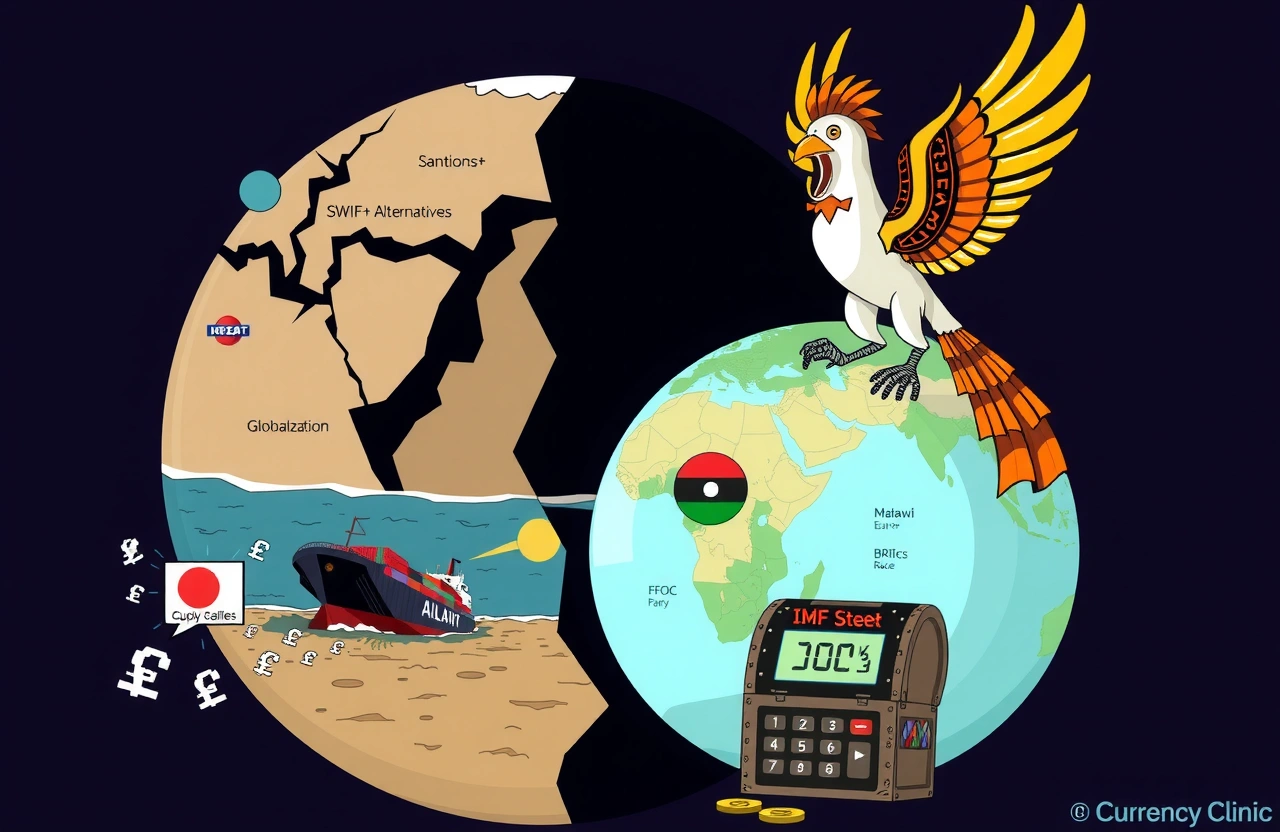The Unraveling Monetary Order
Picture walking into a world market where every third transaction requires currency conversions riddled with premiums, delays, and political risk. That 2025 reality stems directly from accelerating currency fragmentation – a seismic shift rewriting globalization’s rules. Once dominated by a handful of reserve currencies, international finance now fractures along geopolitical lines, amplifying volatility.
Central banks report currency-related trade costs surged 35% since 2022. Corporations face impossible choices: absorb crippling exchange losses or abandon lucrative markets. Supply chain disruptions cascade when currency controls freeze payments overnight. This upheaval exceeds typical market gyrations – it’s systemic reconfiguration demanding urgent navigation strategies.
Drivers of Currency Fragmentation
Currency fragmentation doesn’t emerge spontaneously. Powerful forces converging in 2025 intensify monetary divergence, carving distinct financial spheres with profound global implications.
Geopolitical Realignment Reshapes Monetary Flows
Trade wars and sanctions triggered pivotal shifts:
– US dollar weaponization catalyzed BRICS nations’ settlement systems
– Eurozone capital controls between members during banking crises
– Asian clearing networks bypassing SWIFT (+78% volume since 2023)
These competing blocs prioritize security over efficiency, accepting currency volatility as collateral damage. Financial sanctions doubled annually since 2021 – a primary catalyst for currency fragmentation.
Technological Arms Race Escalates Divides
Blockchain advancements accelerate regional currency frameworks:
– Digital yuan now constitutes 27% China’s cross-border payments
– Project mBridge (multi-CBDC platform) activates direct ASEAN trade
– EU digital wallet mandates take effect March 2025
Each system’s incompatible standards create friction. As IMF notes, ‘.digital isolationism may reduce efficiency gains from globalization by as much as 1.4% GDP annually.’
Economic Fallout Across Sectors
Currency fragmentation delivers complex economic shocks, with SMEs and developing economies absorbing disproportionate damage.
Supply Chain Dislocation Intensifies
The logistics sector exemplifies operational chaos:
– Multinational shipping firms attribute 38% cost surge to FX uncertainty
– Contract renegotiation cycles dropped from annual to quarterly
– Just-in-time manufacturing declined 20% globally as buffer inventories expand
Companies increasingly pursue regionalization, abandoning global sourcing efficiencies. BMW now maintains duplicate suppliers outside currency volatility zones at 15% premium.
Developing Economies Face Compounded Pressures
Emerging markets endure harshest impacts:
– Currency mismatch bankruptcies rose 300% in East Africa
– Malawi food imports dropped 40% due to dollar shortage
– Debt servicing consumes 60% fiscal revenue for Ghana and Zambia
IMF warns: ‘Fragmentation threatens most vulnerable nations through restricted access to capital.’
Financial Markets Navigate Uncharted Terrain
Investment paradigms shift as predictability evaporates, pushing institutions toward fundamental redesigns.
Forex Markets: Doubled Volatility, Halved Certainty
2025 experiences unprecedented exchange rate swings:
– G10 currency volatility index at 14.7 – highest since 2008
– Mexican peso gained 9% against USD then lost 16% in 4 months
– Hedging costs consume 12-18% emerging market profits
JP Morgan reports ‘stranded liquidity’ as arbitrage opportunities vanish between segregated currency zones.
Investor Strategies Pivot Radically
The asset allocation revolution unfolds:
– Geographically concentrated portfolios replace 90% global funds
– TAINA Technology confirms +400% demand for real-time FX audit systems
– Gold reserves hit record as non-aligned asset class
BlackRock CEO: ‘Multipolar monetary systems demand sovereign wealth funds exist in multiple currency realities simultaneously.’
Corporate Survival Tactics
Business adaptation separates thriving enterprises from casualties amid currency fragmentation. Three pillars define winning approaches.
Operational Decentralization Gains Momentum
Forward-thinking firms restructure fundamentally:
– Local currency pricing models replaced 58% multinational contracts
– Regional treasury centers manage autonomous cash flows
– Nestlé reports $2.9B savings through in-country production clusters
Accenture confirms: ‘Supply chain regionalization reduces FX exposure more effectively than financial instruments alone.’
Technological Shields Against Volatility
AI transforms currency risk management:
– Algorithmic payment routing exploiting currency corridors
– Smart contracts releasing funds only upon favorable exchange triggers
– UBS Treasury CRM saves corporations 3.7% on FX annually
As currencies fragment, hedging must evolve beyond traditional forward contracts to survive.
Pathways Through Monetary Fragmentation
Despite challenges, organizations wield strategies to thrive. Momentum grows toward practical solutions beyond political rhetoric.
Regional Currency Mechanisms Emerge
Bridging monetary divides gains traction:
– ASEAN local currency settlement framework expanded quarterly
– Indian rupee trade surging 400% with Russian partners
– Africa’s Pan-African Payment System clears $200B quarterly transactions
Though not eliminating currency friction, regional alternatives mitigate worst fragmentation impacts.
Crypto Solutions Enter Mainstream Adoption
The institutional crypto pivot accelerates:
– Swift released CBDC connector piloting with 38 central banks
– Goldman Sachs uses tokenized commercial paper for cross-border liquidity
– $7.8T asset managers deploy blockchain for FX settlement
Technology offers viable infrastructure – though regulatory uncertainty persists.
Imperatives for Financial Resilience
Decision-makers must fundamentally rethink assumptions. Evidence confirms neutrality proves impossible as currency fragmentation intensifies.
Regional specialization surpasses global scale advantages where currency turbulence exceeds 10% volatility. Treasurers correlate 85% of corporate failures to inadequate FX contingency planning. Leaders prioritizing local resilience through stress-tested supply chains and treasury operations demonstrate consistent outperformance.
Action begins immediately: conduct scenario analysis for multiple monetary fragmentation outcomes. Enhance FX analytic capabilities. Explore regional payment ecosystems. Engage regulators on cross-jurisdictional settlement reforms. The delicate balance awaits your strategic counterweight – delay empowers chaos.



